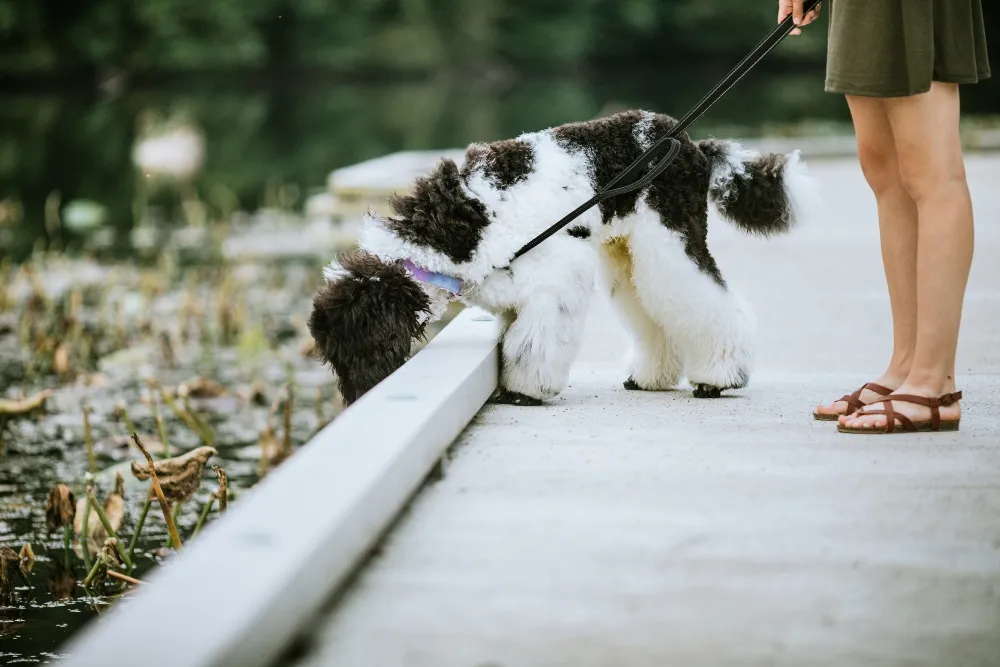Introduction to Pee-Mail Alternative
Have you ever noticed your dog sniffing around, stopping to take a whiff of every tree and bush? If you’ve seen this behavior, you’re familiar with the concept of “pee-mail.” This intriguing canine communication method has sparked interest among pet owners. But what if there was a different way for our furry friends to send messages without leaving their mark everywhere? Enter pee-mail alternative—a modern twist that prioritizes convenience while still allowing dogs to connect.
In this guide, we’ll delve into the world of pee-mail alternatives. From understanding how traditional pee-mail works to exploring benefits and effective strategies for implementation, we’ve got everything covered. Whether you’re looking for healthier options or simply want an easier solution, our comprehensive look at pee-mail alternatives will help you make informed choices for your beloved pets. Let’s dive in!
Understanding Pee-Mail: What is it and how does it work?
Pee-mail is a fascinating concept that revolves around how dogs communicate with each other. When your furry friend lifts their leg to urinate, they’re not just relieving themselves; they’re essentially sending messages through scent.
Each dog’s urine contains unique pheromones and chemicals. These scents carry vital information about the dog’s health, reproductive status, and even emotional state. Other dogs can interpret these scents, gaining insights into who has been in the area before them.
The process works seamlessly in nature. As one dog sniffs another’s pee-mail, they gather details about potential mates or rivals. It’s an unspoken language of sorts—a way for canines to socialize without uttering a bark.
Understanding this behavior opens up avenues for pet owners to engage more deeply with their dogs’ instincts while exploring alternative ways to manage communication on walks or at parks.
The Controversy Surrounding Pee-Mail
Pee-mail has sparked intense debates among dog owners and animal lovers alike. Some argue that it’s a natural behavior, crucial for dogs to communicate with each other. They see it as an essential part of canine social interaction.
On the other hand, many people find pee-mail problematic. Urban areas often face concerns about hygiene and public spaces being transformed into makeshift restrooms. This can lead to frustration among residents who prefer clean streets and parks.
Additionally, there are ethical considerations regarding how this practice affects local wildlife and the environment. The overuse of certain areas can also leave them marked by strong odors or even cause damage.
With these contrasting viewpoints, discussions about pee-mail continue to evolve within pet communities and urban planning circles. As new alternatives emerge, advocates strive for solutions that respect both canine instincts and community standards.
Benefits of Using Pee-Mail Alternative
Using a pee-mail alternative offers several advantages for pet owners and their furry friends. These alternatives often prioritize hygiene. Unlike traditional pee-mail methods, they minimize the risk of spreading bacteria or diseases among dogs.
Another significant benefit is convenience. Many alternatives come in portable options that make it easier to manage waste during walks or trips to the park. This can save time and reduce stress when you’re out with your dog.
Environmental impact also plays a role. Eco-friendly options are available that break down naturally, helping to keep our parks clean and green.
Furthermore, many alternatives include odor-neutralizing features that help eliminate unpleasant smells immediately—something every dog owner appreciates!
Using these products often fosters responsible pet ownership by encouraging regular clean-up practices in public spaces.
How to Get Started with Pee-Mail Alternative
Getting started with a pee-mail alternative is simple and straightforward. First, choose an app or service that fits your needs. Research options like GPS tracking apps or community-based pet networks.
Next, set up your profile. Include essential details about your dog, such as breed and size. This helps other users connect with you more effectively.
Once registered, explore the features available to enhance communication within the pet community. Some platforms allow photo sharing while others focus on local meetups.
Don’t forget to familiarize yourself with privacy settings before sharing information about your furry friend. Ensure you feel comfortable with what’s visible to others.
Start using the platform actively by engaging in discussions or joining groups relevant to your interests. Your experience will improve as you interact more often and build connections within this new space.
Tips for Using Pee-Mail Effectively
Using pee-mail effectively requires a bit of strategy. First, ensure you’re in a safe and appropriate environment. This helps maintain focus and keeps the experience stress-free.
Next, familiarize yourself with your dog’s routine. Timing matters; knowing when they typically need to relieve themselves can enhance communication through this form of marking territory.
Be aware of your surroundings too. Different scents attract various responses from other dogs. Choose locations wisely to facilitate meaningful exchanges without overwhelming distractions.
Don’t forget about hygiene! Carry waste bags for clean-up to promote responsible pet ownership while engaging in this behavior.
Observe how your dog interacts with their environment during these moments. Each sniff tells a story—understanding this can deepen your bond and improve training efforts in the long run.
Alternatives to Pee-Mail: Pros and Cons
When considering alternatives to pee-mail, several options come to mind. Each has its own set of advantages and disadvantages.
One popular alternative is social media. It allows for instant communication and broad outreach. However, it can be overwhelming due to the constant influx of information. Not everyone prefers sharing sensitive messages in such a public space.
Another option is text messaging. This method ensures direct conversations without the clutter of social platforms. Yet, it lacks the environmental benefits associated with natural behaviors like pee-mail.
Email offers a more traditional approach that many find comfortable. While it’s formal and organized, it may not convey the same instinctive flair as other methods.
Using scent-marking sprays mimics some aspects of pee-mail but can feel artificial to both dogs and their owners alike. Finding what works best often depends on personal preferences and specific circumstances.
Conclusion
Choosing the right communication method for your furry friend is essential. Pee-mail alternatives offer various ways to keep dogs connected while respecting the environment and community.
Consider exploring options that prioritize safety, hygiene, and ease of use. With so many innovative tools available today, finding a suitable solution has never been easier.
Engage with other dog owners to share experiences or recommendations. This can help you make informed decisions based on real-world feedback and insights.
Embracing new technologies opens up exciting possibilities for bonding with your pet. You’ll foster better interaction not just with them but also within the neighborhood’s canine community.
Every dog owner wants what’s best for their pup. Finding an effective pee-mail alternative may enhance those connections in more meaningful ways than ever before.
FAQs
What is a pee-mail alternative?
A pee-mail alternative refers to different methods or systems used by pets, particularly dogs, to communicate with one another when they relieve themselves. These alternatives can encompass training techniques and various products designed to manage your pet’s bathroom habits while minimizing the need for traditional pee-mail practices.
Is using a pee-mail alternative effective?
Yes, many dog owners find that implementing an alternative method helps reduce unwanted behaviors associated with pee-mailing. It encourages more controlled potty breaks and improves communication among pets without leaving messages behind.
What are some popular alternatives to traditional pee-mail?
Some common alternatives include designated potty areas in yards, indoor dog toilets, and specific training routines that focus on consistent bathroom schedules. Each method has its pros and cons depending on your dog’s behavior and living situation.
Can my dog still enjoy outdoor walks if we use a pee-mail alternative?
Absolutely! Using a pee-mail alternative doesn’t mean you have to sacrifice outdoor activities. Your furry friend will still benefit from regular exercise during walks while learning appropriate bathroom etiquette through training techniques or designated spots.
How can I train my dog for successful use of a new system?
Start by consistently rewarding your pup for using the designated area instead of marking everywhere outdoors. Use positive reinforcement like treats or praise whenever they follow the new routine correctly. Patience is key during this transition process as each pet adapts differently.
Are there any downsides to switching from traditional pee mail approaches?
While transitioning may require time and effort, potential drawbacks might include initial confusion for your pet or mixed signals if not implemented consistently. However, most owners find these challenges manageable compared to improving their dog’s overall behavior long-term.

















